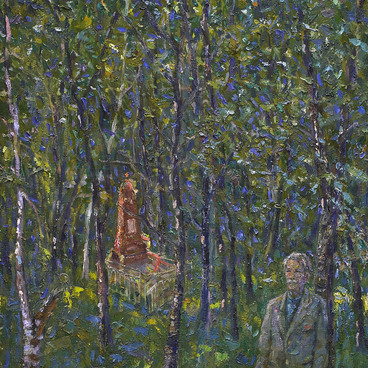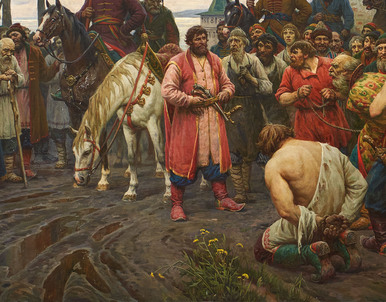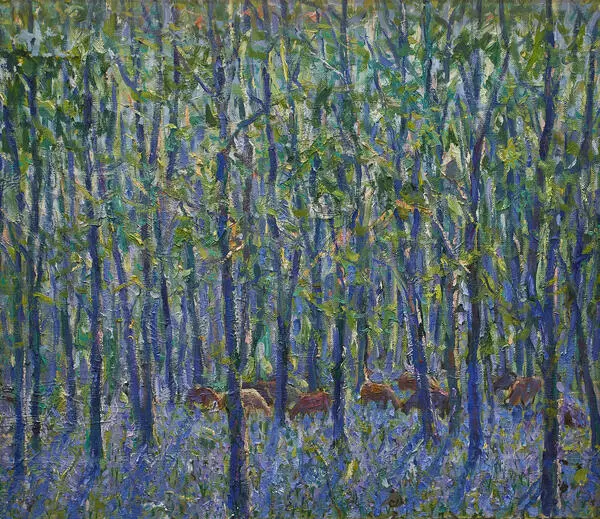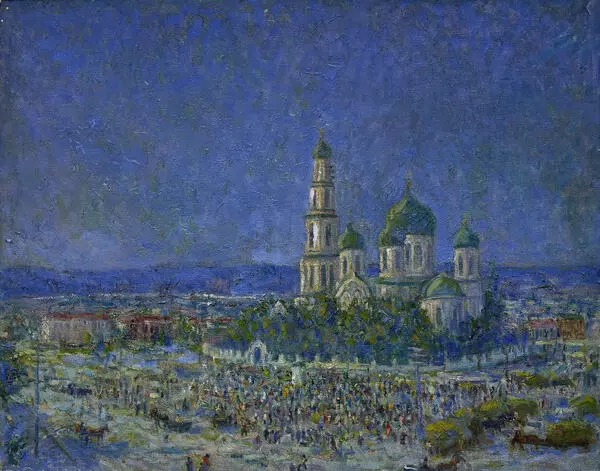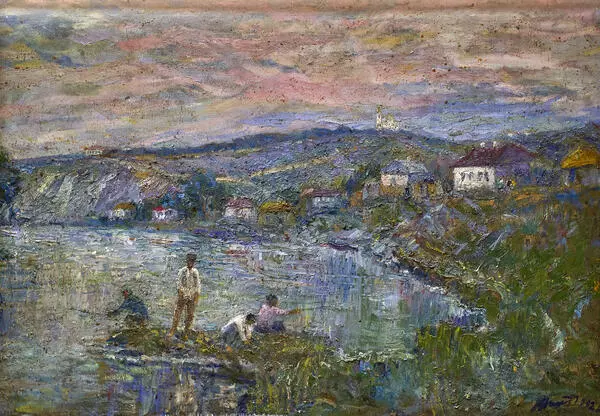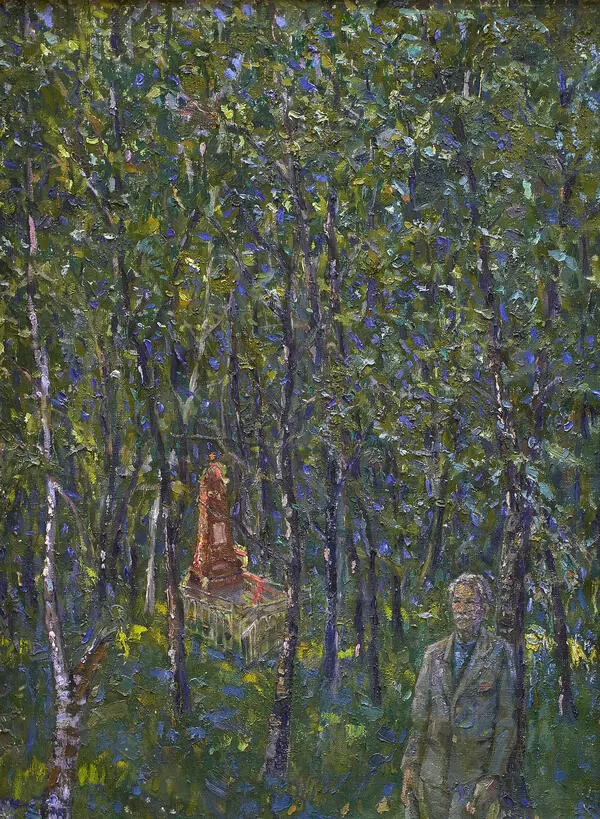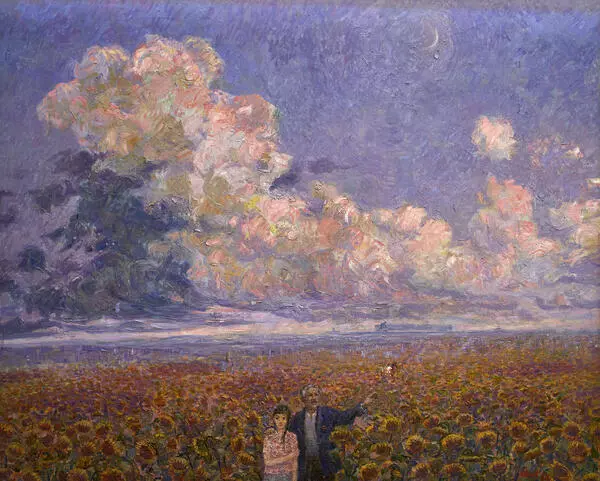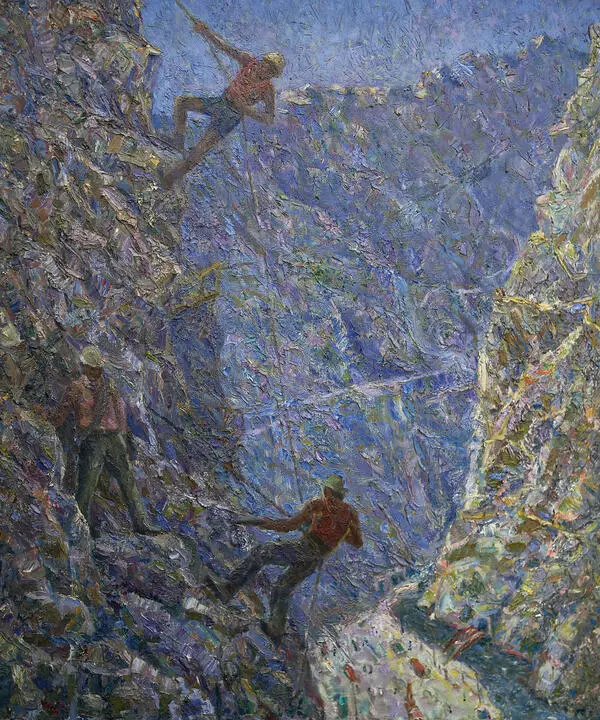The ‘Cossack Sloboda. 1915’ painting from the collection of the Valuy Museum of History and Art was created by Alexander Ignatiev, People’s Artist of Kyrgyzstan, laureate of the State Prize of the Kyrgyz SSR named after Toktogul. His works are kept in 14 museums in Russia and former Soviet republics and the State Tretyakov Gallery.
He was born in the town of Valuyki, Belgorod region. He has been depicting his home and historical monuments on paper from a young age. But most of all, the amateur artist loved to paint nature. In the future, this influenced his creative style.
In 1924, Alexander Ignatiev graduated from the Valuy school. After that, he worked for two years as an artist of the local theater — first, drama theater and musical comedy. Soon, he moved to Voronezh, where he entered the Art and Pedagogical Technical School. After being called by the People’s Commissariat of the Kirghiz SSR, Ignatiev was assigned to the city of Frunze. There he was engaged in the development of the new socialist culture of the Republic.
In 1934, Alexander Ignatiev was appointed Deputy Chairman of the Union of Artists of Kyrgyzstan. Together with Russian painters Semyon Chuikov, Vladimir Obraztsov, and the first national representatives of the fine arts of Kyrgyzstan formed in the 1930s, Gapar Aitiev and Sabyrbek Akylbekov, he participated in the organization of the artistic life of Kyrgyzstan. Also, Ignatiev developed the fundamental principles of realistic art and its connection with folklife.
Alexander Ignatiev influenced the development of national Fine Art. Since 1955, he worked in the Board of the Union of Artists of the Kyrgyz SSR and was a member of the State Expert Commission under the Ministry of Culture of the Republic. On his initiative, Ignatiev organized the National Museum of Fine Arts in his native Valuyki, which is now known as the Valuy Museum of History and Art.
A special place in Ignatiev’s work is occupied by works of art, in which he depicted one of the oldest neighborhoods of his native city — the Cossack settlement on the banks of the Valuy river. He painted his canvases based on old photographs of the early twentieth century.
The town of Valuyki was a fortress in the 16th - 17th centuries. In the first decades of the existence of Valuyka fortress. The local population was mainly engaged in the guard service. The town was of strategic importance and served as a defense against nomads. Also, Valuyki and the functions of the border service served for a long time as an essential transfer point on the Bolshoy tract from Moscow to the Don, the Crimea, and Turkey.
He was born in the town of Valuyki, Belgorod region. He has been depicting his home and historical monuments on paper from a young age. But most of all, the amateur artist loved to paint nature. In the future, this influenced his creative style.
In 1924, Alexander Ignatiev graduated from the Valuy school. After that, he worked for two years as an artist of the local theater — first, drama theater and musical comedy. Soon, he moved to Voronezh, where he entered the Art and Pedagogical Technical School. After being called by the People’s Commissariat of the Kirghiz SSR, Ignatiev was assigned to the city of Frunze. There he was engaged in the development of the new socialist culture of the Republic.
In 1934, Alexander Ignatiev was appointed Deputy Chairman of the Union of Artists of Kyrgyzstan. Together with Russian painters Semyon Chuikov, Vladimir Obraztsov, and the first national representatives of the fine arts of Kyrgyzstan formed in the 1930s, Gapar Aitiev and Sabyrbek Akylbekov, he participated in the organization of the artistic life of Kyrgyzstan. Also, Ignatiev developed the fundamental principles of realistic art and its connection with folklife.
Alexander Ignatiev influenced the development of national Fine Art. Since 1955, he worked in the Board of the Union of Artists of the Kyrgyz SSR and was a member of the State Expert Commission under the Ministry of Culture of the Republic. On his initiative, Ignatiev organized the National Museum of Fine Arts in his native Valuyki, which is now known as the Valuy Museum of History and Art.
A special place in Ignatiev’s work is occupied by works of art, in which he depicted one of the oldest neighborhoods of his native city — the Cossack settlement on the banks of the Valuy river. He painted his canvases based on old photographs of the early twentieth century.
The town of Valuyki was a fortress in the 16th - 17th centuries. In the first decades of the existence of Valuyka fortress. The local population was mainly engaged in the guard service. The town was of strategic importance and served as a defense against nomads. Also, Valuyki and the functions of the border service served for a long time as an essential transfer point on the Bolshoy tract from Moscow to the Don, the Crimea, and Turkey.


